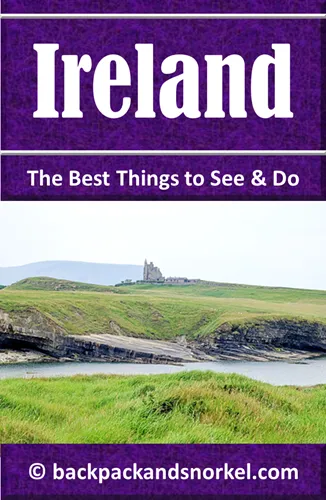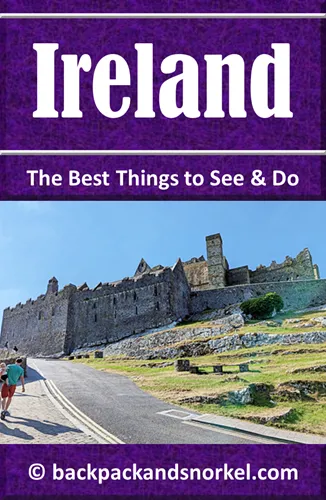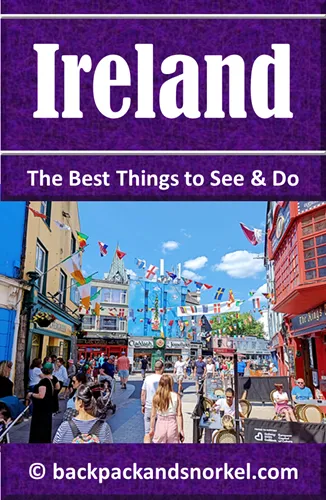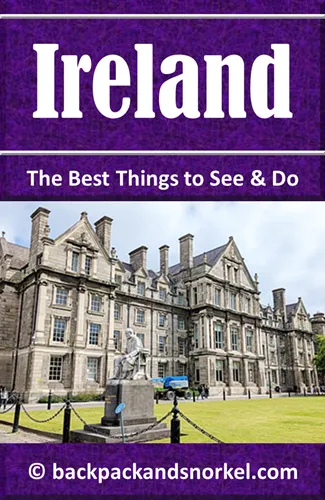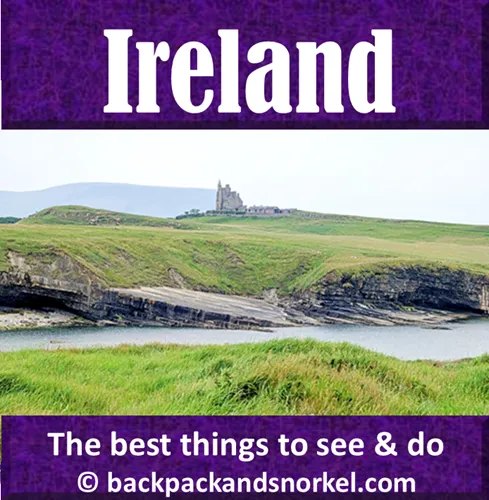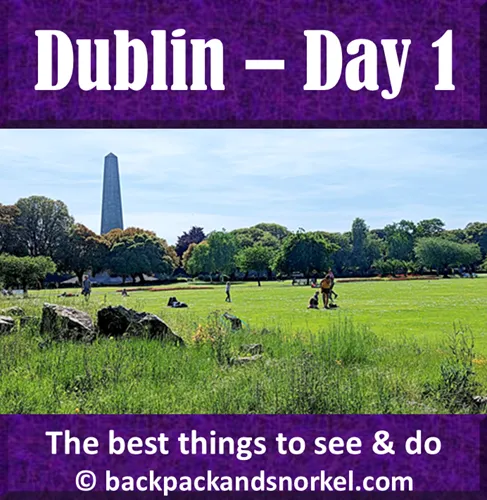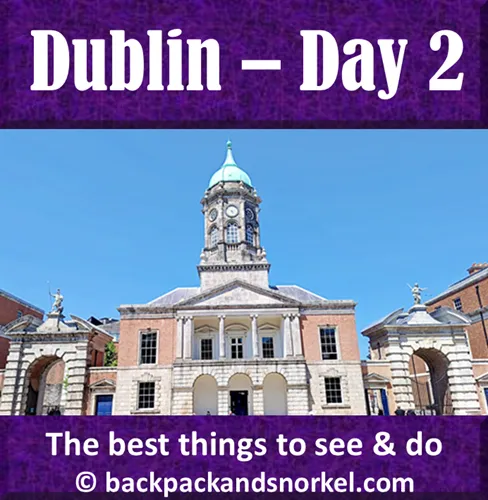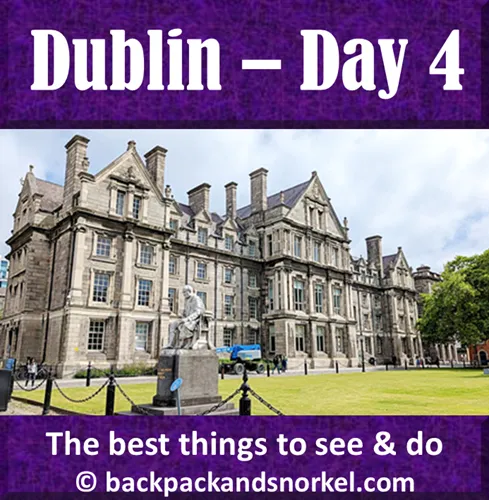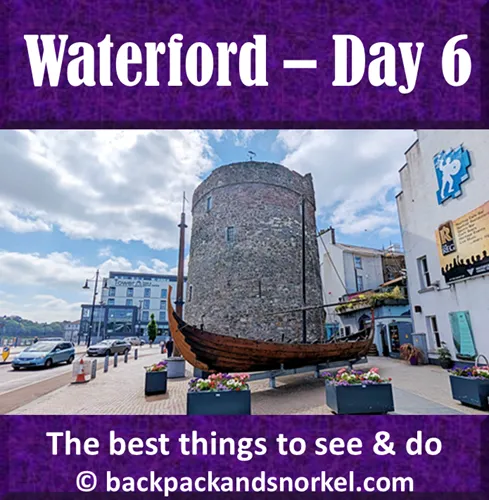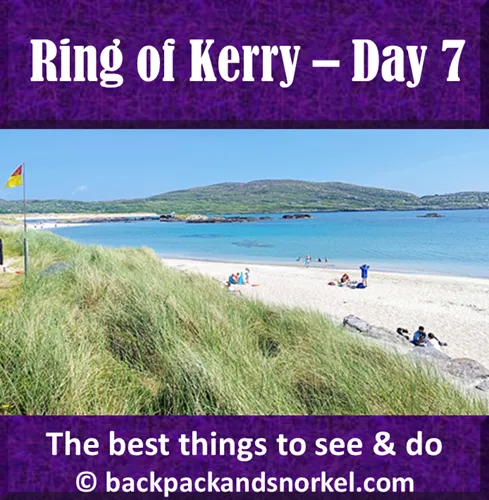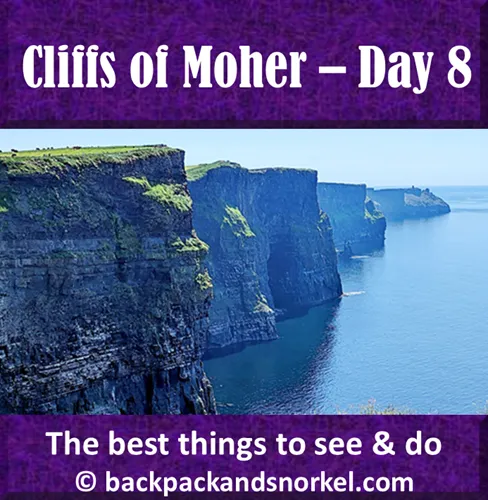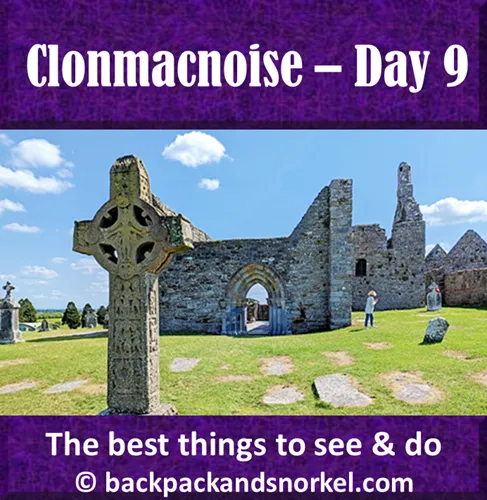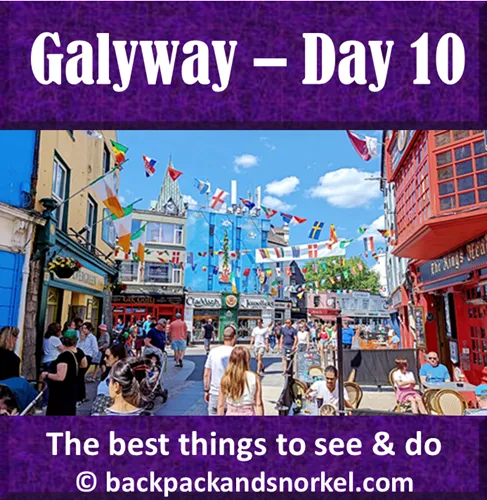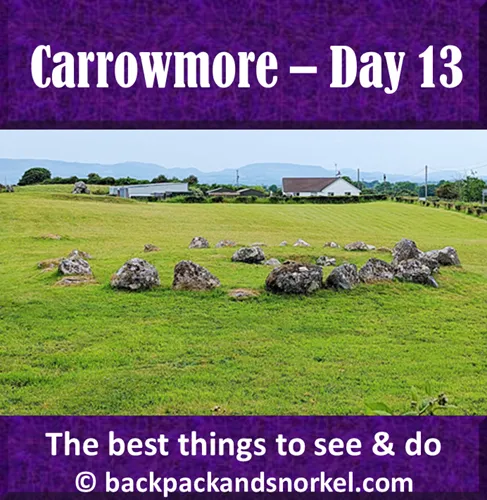Backpack and Snorkel Travel Guide for Carrowmore Megalithic Cemetery and Mullaghmore Peninsula - Ireland Purple Travel Guide
Today we will explore the Carrowmore Megalithic Cemetery and Mullaghmore Peninsula, before we drive to Northen Ireland. We provide detailed information and the best things to see and we show lots of photos so you know what you can expect.
Today, we will explore the largest, and oldest collection of dolmens, tombs, and stone circles in Ireland at Carrowmore Megalithic Cemetery. Before we bet farewell to Ireland for now, and cross over into Northern Ireland, we will stop and relax at the Mullaghmore Peninsula.
In (London)Derry, Northern Ireland, we will end the day with a city-and-murals tour.
This Ireland Purple Travel Guide ends with the Mullaghmore Peninsula, and the trip description is continued in our Northern Ireland Purple Travel Guide.
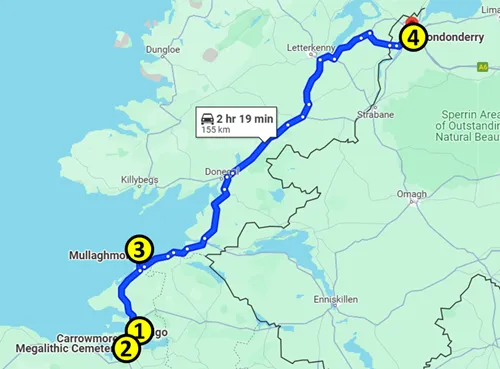
1 = Sligo
2 = Carrowmore Megalithic Cemetery
3 = Mullaghmore Peninsula
4 = (London)Derry
Carrowmore Megalithic Cemetery
The Megalithic Cemetery is open mid-March – early November 2024, daily from 10am – 6pm with the last admission at 5pm.
Admission is Euro 5 per adult - as of 2024, they are accepting credit cards.
Carrowmore is one of four large megalithic cemeteries or monument complexes in Ireland of the Passage Tomb' tradition. The other major clusters are: Bru na Boinne (incl. Newgrange, Knowth and Dowth), Loughcrew and Carrowkeel. Carrowmore today consists of over 30 monuments, in varying repair, laid out in an oval around the Central Tomb (Tomb 51).
During the compilation of the first Ordnance Survey of Britain and Ireland in 1837, George Petrie numbered the Carrowmore monuments, and we still use Petrie's numbering system today. More tombs existed in his time; some of the gaps between numbers indicate destroyed monuments. The cemetery, set on a plateau 180 ft (55m) above sea level, on the Cuil lorra peninsula, covers an area of more than 247 acres (1 km2). The monuments located outside the public area circumscribed by the dotted boundary on the map below are located on private land.
Most of the Carrowmore monuments are open, uncovered Ddolmen Circles; and are considered to be Satellite Tombs of the central cairn. Usually five upright stones form the chamber, which is covered with a capstone and surrounded by a circle of large boulders. Research at Carrowmore suggests that tomb construction began here by at least 5700 years ago; soon after the first farmers arrived in Ireland.
Three km from Carrowmore, at Maugheraboy, near Sligo town, a Causewayed Enclosure (associated with early agriculture in Europe) provides further evidence of these early farmers. Megalithic monuments of similar type to Carrowmore are found along the Atlantic Facade, in Sweden, Denmark, Holland, Britain, France, Spain and Portugal.

NORTHERN WALK (F) - ACROSS THE ROAD
- Tomb 1: Both the outer and inner boulder circles remain intact at Tomb 1; in 1837 Petrie saw a Broken Dolmen there.
- Tomb 2 is much disturbed and scattered in neighboring walls.
- Tomb 3 is a small chamber at the center of a circle of 30 boulders. 19th and 20th century excavations recovered approx. 66 lbs (30 kg) of burned human bones.
- Tomb 4 had 21 stones encircling it in 1837; today only one remains. Antiquarian digs there yielded burned bone and characteristic passage tomb finds (antler pins, quartz, etc.).
- Tomb 7 On private land, and inaccessible, Tomb 7 is the largest and most northerly site at Carrowmore. An excavation in 1977/78 found evidence of a central posthole, the point from where the original boulder circle may have been determined. From artefacts found there, we know that people re-visited Tomb 7 in the Beaker (Bronze Age) and even the Roman eras.
CENTRAL WALK (A)
- Tomb 54: This dolmen is partly hidden by soil. Its boulder circle is absent. The stone used in the construction of the Carrowmore Satellite Tombs is - almost exclusively - a metamorphic rock called gneiss, which were scattered freely as glacial erratics on the limestone landscape of Cuil lorra. It comes from the Ox Mountains some distance to the south, and was likely transported here by glacial activity at the end of the last Ice Age. In the late 1800's W. G. Wood-Martin found cremated human bones, accompanied by quartz fragments and a pottery shard in this chamber.
- Tomb 55: Located on the western edge of the cemetery , Tomb 55 was covered by a heap of modern fieldstones until a partial excavation was undertaken in 1998. Most of the stones may have been removed during the 1800's. Large quantities of human bone together with stone pendants and other probable personal ornaments were found here. The path leads you south towards Tomb 52a. Tomb 52a was uncovered by workers when a fieldwall was removed in 1998.
- Tomb 52: A well-preserved megalithic chamber. Clues may be found at this site as to the original method of construction. Five upright chamber stones appear to have been assembled first, held in position by stone packing at the base. Another feature of Tomb 52 is the placement of paired stones at the opening of the chamber, remnants of a ceremonial or symbolic passage. Simple passages like this eventually evolved into the more elaborate tunnel-like passages at monuments such as Newgrange, constructed several hundred years later. Like most of the tombs in the complex, this site is aligned towards the area of the central cairn.
Viewing area (C)
- This position on the central ridge provides a good view over Carrowmore. To the south, Tombs 48 (a dolmen partly covered by field stones) and Tomb 49 nestle in the hollow. Beyond that, a ridge marks the southern boundary; hedgerow in the distance obscuring Tomb 37. Tombs 19, 26 and 27 are located on the eastern side of the complex (largely hidden by vegetation). These three monuments have some of Carrowmore’s largest boulder circles. Tomb 19 has the remains of a central chamber. An excavation 1997 found a of number of stone balls, and showed usage of the monument between 3950 and 3500 BC. Tomb 26 was altered significantly at the juncture of the Bronze and the Ages (680-490 BC), the remains of a young female and fetus were buried in the center of the circle around 60 AD. Tomb 27 has the only example in Carrowmore of a cruciform chamber, a form often seen in later and larger passage tombs in other parts of Ireland.
- Carrowmore is not an isolated site: it stands in the center of the Landscape of the Monuments. The entire region is dotted with passage tombs sites. The general location of 50 of these sites can be seen from position (C). East of Carrowmore, Cairns Hill East & West lie on Cairns Hill (though no longer visible today). To the south-east, the Ballygawley Mountains have visible passage tombs on all four summits. On a clear day looking directly south, a distant U-shaped valley can be seen, the location of the Carrowkeel passage tombs. To the right of this position, Keshcorran Hill is topped by a passage tomb known as The Pinnacle. Further right, in the Ox Mountains, is Croghaun Mountain. From behind the Ox Mountains, Knocknashee appears, surmounted by two passage tombs.: xxx
WALK (D)
- Tomb 51: The central tomb is known as Listoghil. Before excavation, about 20 kerbstones were visible in a sprawling uneven mound, which reached a height of 8 ft (2.5 m), the remains of a disturbed cairn of loose stones. The capstone of the chamber was exposed. No records of when the monument was damaged survive — as early as 1779, Gabriel Beranger, a visiting artist described it as a Cave. Later writers recorded local lore that Listoghil had once been used as a stone quarry. It was excavated in 1996-98 by the Swedish archaeology team of Prof. Göran Burenhult. Cremated human and animal bones were deposited behind some of the kerbstones. Dates indicate that the central chamber was in use around 3500 BC . After excavation from 1996-98, the cairn was restored to what was believed to be its original profile. The original kerb, an outer stone circle of 101 stones, and the burial chamber, are retained. Recent DNA analyses on a tooth recovered during excavations have revealed the deep ancestry of one individual to have been in Anatolia (roughly equivalent to Turkey today). Listoghil is directed East-South-East, towards the rising sun at the start and end of winter.
- Tomb 56: Wood-Martin excavated this monument in the 1800's and removed large quantities of cremated bone. Its partial excavation in 1994 revealed evidence of fire, and items such as stone beads, an arrowhead and a hollow scraper made of white Antrim flint.
- Tomb 57 is beside Tomb 56. It consists of a circle with 33 very large boulders. No evidence of a chamber exists, but a hollow in the center of this monument may indicate that a structure was present at some stage. Monument pairings, like Tombs 57 & 56, occur regularly at the Carrowmore and Carrowkeel passage tomb complexes.

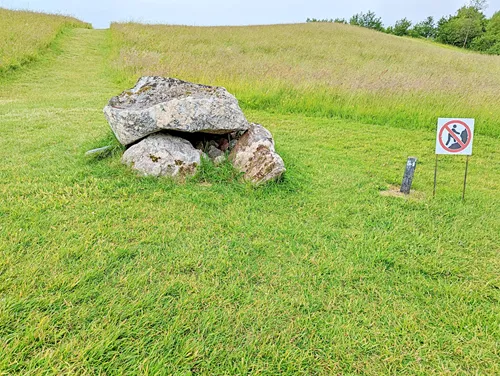


Mullaghmore Peninsula
The Mullaghmore Peninsula (Mullaghmore Head), is a small peninsula in the far northeastern part of County Sligo. Its only village, Mullaghmore, has only 136 year-round residents, but is significantly higher in summer, when the two beaches in the southwest and southeast draw lots of visitors and big wave surfers and windsurfers from around the world attend big-wave surf contests or practice for them.
The Mullaghmore Peninsula is dominated by Classiebawn Castle, which was completed in 1874. It is privately owned and not open to the public.
The peninsula is a nice lunch stop on your way to (London)Derry in Northern Ireland. You can eat lunch at the Beach Hotel Mullaghmore and look at the peaceful harbor and ocean, or you can eat at Mullaghmore Beach.
And, you can drive around the northern part of the peninsula on the 3-mile (4.6 km) loop road.
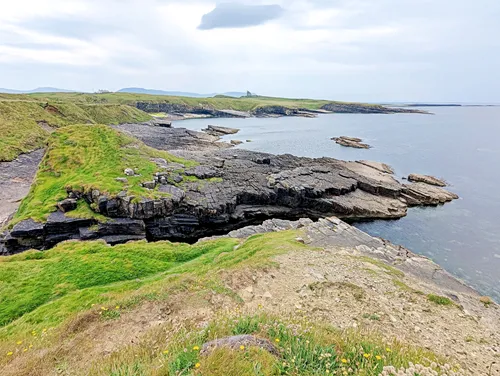


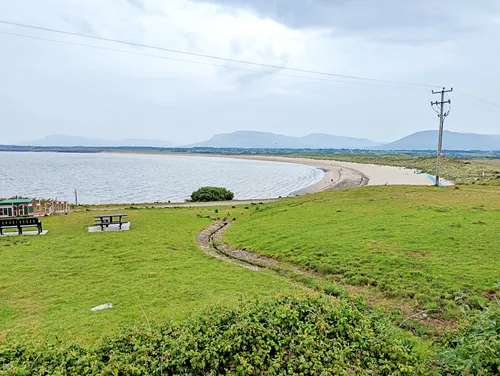
(London)Derry
(London)Derry is our first destination in Northern Ireland.
At the time of writing, there are no border patrols between Ireland and Northern Ireland at any of the many roads that connect both countries.
You may not even notice that you cross into Northern Ireland, as not every road has a sign that makes you aware of the border crossing.
The only thing that notifies you of the border crossing may be:
- Your GPS announcing ‘Welcome to Northern Ireland’ or ‘Welcome to the United Kingdom’
- The speed limit signs becoming a bit more frequent and showing smaller numbers, as Northern Ireland is part of the UK and speed limits are now in miles per hour, instead of km per hour in Ireland
- When you get out and try to pay at a gas station or restaurant, the prices are now in British Pounds instead of the Euros that are used in Ireland
Please continue reading in our Northern Ireland Purple Travel Guide here.
To jump directly to:
- the hotels in (London)Derry in the Northern Ireland Purple Travel Guide, click here
- the self-guided tour of in (London)Derry in the Northern Ireland Purple Travel Guide, click here
Where do you want to go now?
Author: Rudy at Backpack and Snorkel
Bio: Owner of Backpack and Snorkel Travel Guides. We create in-depth guides to help you plan unforgettable vacations around the world.
Other popular Purple Travel Guides you may be interested in:
Like this Backpack and Snorkel Purple Travel Guide? Pin these for later:
